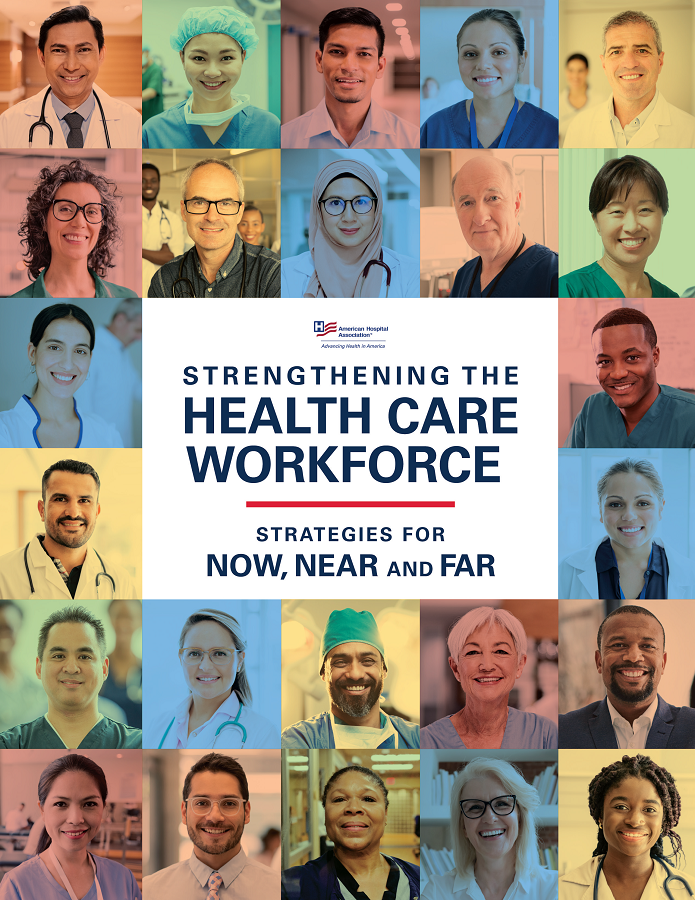Section 1
Supporting the Team
The first section of the guide, which includes key considerations and questions to drive action, takeaways and action items for CEOs, and resources and case studies, focuses on addressing well-being, supporting behavioral health and workplace violence prevention. Chapter 1 provides ways for hospitals and health systems to address burnout from a system-wide level to better care for the health care workers who care for our communities. Chapter 2 is aimed at strategies to reduce stigma and improving access to behavioral health services for the health care workforce, while also fostering human resilience to improve mental and often physical health. Chapter 3 addresses how to identify and assess workplace violence prevention initiatives at your hospital or health system that contribute to creating a culture of safety.

Chapter 1
Addressing Well-Being
While organizations have long sought to address the system-level drivers of workplace stress and burnout, these drivers became more pronounced as COVID-19 added extended periods of stress to all parts of the health care workforce. The impact of these extended stressors makes it critical for hospitals and health systems to address burnout from a system-wide level to better care for the health care workers who care for our communities.

Chapter 2
Supporting Behavioral Health
Reducing stigma and improving access to behavioral health services for the health care workforce, combined with fostering human resilience can improve mental and often physical health, reduce the total cost of care, reduce suicide, and support a healthy workforce.

Chapter 3
Workplace Violence Prevention
Even before the COVID-19 pandemic, hospitals and health system teams experienced violence, from bullying and incivility to active shooters, intimate partner violence, cyberattacks, homicides and suicides. However, the compounding trauma of the pandemic has heightened the need to create a safer workplace, both physically and psychologically, and a more resilient workforce.


